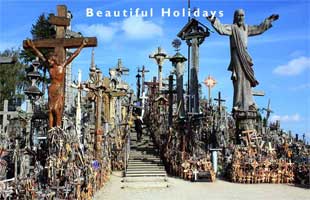Bohemian Europe
Beautiful European Holidays


Monmatre in Paris is the grandmommy of all hippy hangouts – its still well worth seeing, but most impecunious artists are unlikely to be able to afford the real estate prices! Similar districts exist in many Western European cities.
Barcelona is certainly one of the coolest places in modern day Spain, and you’ll be able to find plenty of alternative types here. However, Tenerife is a popular destination for those in search of laid back party vibes.
Post-communist Berlin was a great Bohemian hangout, but the arty zeitgeist is fading as Germany’s economy develops. The Tacheles artists’ squat can still be visited – but its future is uncertain.
Amsterdam, with its legal cannabis and laissez faire attitude, is one of the most enduringly popular alternative destinations – although the Dam is so popular, it’s not exactly alternative!
Chelsea was the original bohemian hangout in London, but now Camden is the main centre. Although Glastonbury is most famous for its music festival, it’s a year-round destination for New Ageism in England.
Istanbul was another major centre for sixties backpackers, as it marked the start of the overland route to India, drugs and spiritual enlightenment. The Pudding Shop, a café that was the best place to meet people to journey with, remains open, although does not have quite the same vibe it once did.
Revolution in Ukraine. Its relatively cheap cost of living, beautiful architecture and rich cultural life mean that it’s ideal for those who want to be inspired.
In Belgrade, Skadarlija Street was the traditional centre for artistic life – although is now lined with restaurants, most with gypsy bands, and a wonderful place to spend an evening. Belgrade, with its low living costs and trendy music festivals, is also an emerging destination – go now before it gets ‘discovered’ by stag parties!
The origin point for many of the Romany’s mentioned in the introduction, Romanian cities generally combine low costs with friendly locals and beautiful architecture – try Brasov or Timisoara. These cities have a magical, laid-back atmosphere. If you’re looking for beaches, then Vama Veche in Romania is one of the most ‘alternative’ resorts in Europe, and attracts numerous campers who stay for a weekend, a week or longer. Vama Veche has been popular since it was tolerated as a haven for free-thinkers during the Communist era.
Lithuania makes the list of bohemian destinations for several reasons. Vilinius’ Uzupis District is a current and famous hangout for artists. Somewhat bizarrely, the city also has a statue of Frank Zappa. The Lithuanian countryside is noted for its ancient rituals, many of which are still practised to this day. The Curonian Spit, a unique piece of land linking Lithuania with the Kaliningrad Oblast, is said to be the haunt of witches.
In Scotland, Faslane Peace Camp is nearly thirty years old, and is a centre for anti-war protestors from all over the world. You can also visit the Findhorn Foundation, with its thriving eco-community, and Christians looking for a remote retreat may find it on Iona. Orwell wrote some of his most famous work on Jura, which is even more difficult to reach!
Most cities in Europe have some sort of contemporary art scene – post-industrial cities in the UK have been particularly keen to boost their arty credentials, so check out Liverpool, Manchester and Glasgow, among others.
It’s not exactly bohemian in origin, but the EU’s European City of Culture award is given to one or more European cities every year. This usually results in the chosen cities developing contemporary art and holding festivals. The award tends to go to places that aren’t city capitals, but do have regular as well as offbeat charms – in other words, cities that are likely to have a bohemian vibe.
